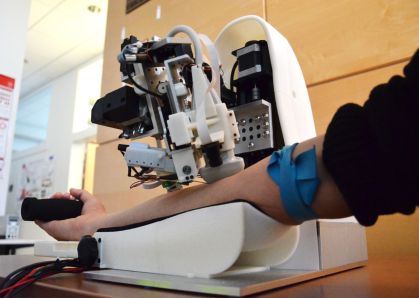
Engineers create device that can also insert catheters. Rutgers engineers have created a tabletop device that combines a robot, AI and near-infrared and ultrasound imaging to draw blood or insert catheters to deliver fluids and drugs.
Their most recent research results, published in the journal Nature Machine Intelligence, suggest that autonomous systems like the image-guided robotic device could outperform people on some complex medical tasks.
Medical robots could reduce injuries and improve the efficiency and outcomes of procedures, as well as carry out tasks with minimal supervision when resources are limited...
Read More







Recent Comments